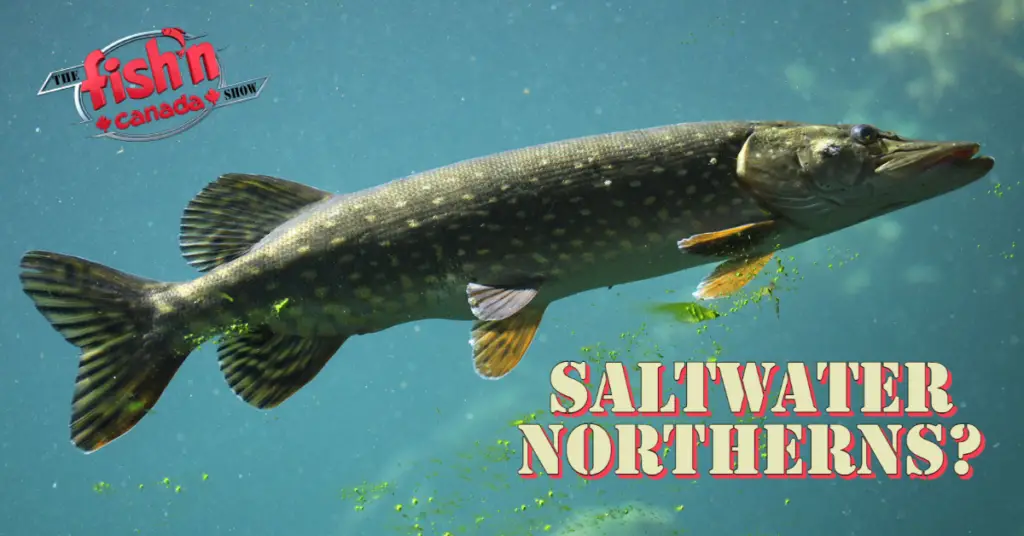Back in 2019, a rather foreboding discovery was made: invasive northern pike were found in Vogel Lake, situated at the tip of the Kenai Peninsula. This raised concerns among biologists at the Alaska Department of Fish and Game. Eric Wood, a fisheries biologist based in Soldotna, explained that prior to the Vogel discovery, biologists on the peninsula had only encountered pike in lakes accessible by car, indicating that those pike were likely illegally introduced by anglers.
The presence of pike in Vogel, a remote lake near Point Possession that can only be reached by float plane or snowmachine, puzzled researchers. It became evident that the fish could potentially use the ocean as a means to move between freshwater habitats, sparking new inquiries about their potential range and prompting scientists to explore methods of controlling their population.
“This discovery kind of opened the door to a whole bunch of other concerns and questions and things we need to figure out,” stated Wood.
Although northern pike are indigenous to interior and western Alaska, they have become a popular species among anglers. According to the narrative, sport fishermen began introducing pike to lakes in the region during the 1950s, followed by the Kenai Peninsula lakes in the 1970s, most likely through Fairbanks. Unfortunately, this practice has caused problems for other fish species as pike tend to dominate any ecosystem they inhabit, consuming salmon and depleting local fish populations.
Kristine Dunker, an invasive species biologist, revealed that pike have been discovered in approximately 150 bodies of water throughout the region. Efforts to control their populations in the Matanuska-Susitna Borough have proven challenging. However, on the Kenai Peninsula, the issue has been more manageable. Dunker explained that over the course of two decades, biologists from various local, state, and federal agencies have diligently worked to eradicate pike on the peninsula.
“And we thought we had. In 2018, we finished a project in the Tote Road area and thought that that was it — that all known populations were gone at that point,” she said. “And it was like, ‘Yay!’ — for about a week.”
The department soon received reports from an angler who had discovered pike in Vogel Lake and from netsetters who were catching pike in Cook Inlet. In collaboration with a researcher in Fairbanks, the Fish and Game department began testing the pike to determine if they had traversed saltwater. They examined the otoliths, or ear bones, of the fish, which can retain traces of the fish’s surroundings.

Invasive pike pose a threat to native fish species, like salmon. (Kristine Dunker/ADFG)
“When we got the results back, you could see on the graph that this fish actually came from somewhere, spent time in saltwater, and then went to a different freshwater location,” Dunker said. “That was very eye-opening to us.”
Wood explained that the ocean pathway could complicate containment efforts, particularly as glacier melt makes inlet conditions more favorable for the freshwater fish. The exact origin of the pike and how they ended up in their current locations remain unknown. However, Wood speculated that the Susitna River is a probable point of origin due to the widespread presence of pike there.
Both Wood and Dunker acknowledged the fascinating nature of these new research discoveries. They have also detected marine signatures in pike from other systems, such as Campbell Lake and Westchester Lagoon in Anchorage earlier this year.
However, the findings present additional challenges on the management front. Dunker emphasized the importance of preventing the spread of pike populations since they have the ability to disperse.
“The big challenge for us now is to try to figure out — How do we do that well? When you have a scenario where pike could be moving around marine estuary corridors, that makes it a much more difficult problem. But it doesn’t make it an impossible one,” she said. “It just means we have to be kind of smart about it and anticipate where they might be going.“
Wood explained that Fish and Game has taken steps to prevent northern pike from entering the system by installing a weir at Miller Creek, which is the outlet of Vogel Lake. However, he emphasized that this measure is not a permanent solution.
“The reality of it is, there’s so much money, so much tradition and everything tied up with salmon in this area, that this could have the potential to wipe out so much,” Wood said. “





